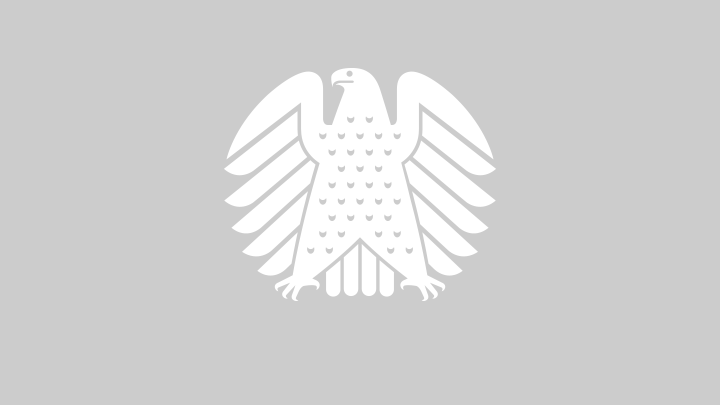Jorge Pardo

(Jorge Pardo, courtesy neugerriemschneider, Berlin 2002, photo: Jens Ziehe)
untitled restaurant
Jorge Pardo (born 1963 in Havana, Cuba; lives in Los Angeles, USA), Restaurant in the Paul-Löbe Building, Berlin, 1998/2002
Looking from the Kronprinzenbrücke across the River Spree to the Reichstag Building at night, one is struck by coloured lights coming from the Paul-Löbe-Building. Emitted by spherical lamps designed by the Cuban artist Jorge Pardo, the lights twinkle like bubbles on the surface of the Spree at the point where it flows between the Paul-Löbe Building and the Marie-Elisabeth-Lüders Building. Before the fall of the Wall, the river here formed the border between East and West Berlin. Moving across the bridge and down to the bank of the Spree, you reach Pardo’s colourful installation, created for the restaurant in the Paul-Löbe Building, the building in which parliamentary committees of the German Bundestag meet.
The restaurant occupies the ground floor of the building’s round tower, which overlooks the river. Pardo’s installation comprises countless ball-shaped lamps, their colours carefully orchestrated and each of them made of two glass forms fitted into one another; round tables and chairs, all decorated with coloured inlays; and a shiny green and white terrazzo floor. The cheerful colours, some strong, some in pastel shades, and the simplicity of the tables recall Scandinavian design, while the general brightness evokes the bold colours typical of folk art from Mexico and the Caribbean. The shapes used in the installation provide a number of attractive variations on the basic circle of the tower’s floor plan. All in all, the restaurant offers a vibrant contrast to the rigorous architecture and its grey undressed concrete.
Pardo has created an interior design for the restaurant that meets all functional and aesthetic requirements. Yet his installation is by no means either purely functionalist or wholly self-contained. Rather, the continuously glazed restaurant resembles a display in a museum or gallery, presenting a sculptural ensemble of lamps and tables and a "painterly" array of decorative features. All the elements combine to form a work of art in space. As the artist himself puts it: "I’m trying to do something radically different in a beautifully comfortable way". Pardo’s distinctive synthesis of form and function reflects his concerns as an artist, encouraging viewers not simply to perceive their surroundings in terms of their usefulness, but to experience them as shaped environments, as artistic mises en scène.
Such probing of the creative possibilities afforded by situations in which art and architecture, design and sculpture, day-to-day function and aesthetic autonomy meet is characteristic of Pardo. Availing himself of established styles, he presents the objects he has created almost as though they were ready-mades, but organises them in such a way that they acquire an artistic value of their own. While apparently quoting directly from the repertoire of forms and colours devised by Arne Jacobson and Alvar Aalto, for example, Pardo is in fact using visual associations of this kind to generate an original, highly individual interpretation of familiar modes of design. Crossing freely between various art forms, he has adopted a uniquely personal approach that distinguishes his installation from the other site-specific works of art created for the parliamentary buildings in Berlin. In his restaurant Pardo accords art a place in everyday life and, in doing so, raises the whole issue of how far art can be made integral to human life.
Text by Andreas Kaernbach,
Curator of the Art Collection of the German Bundestag